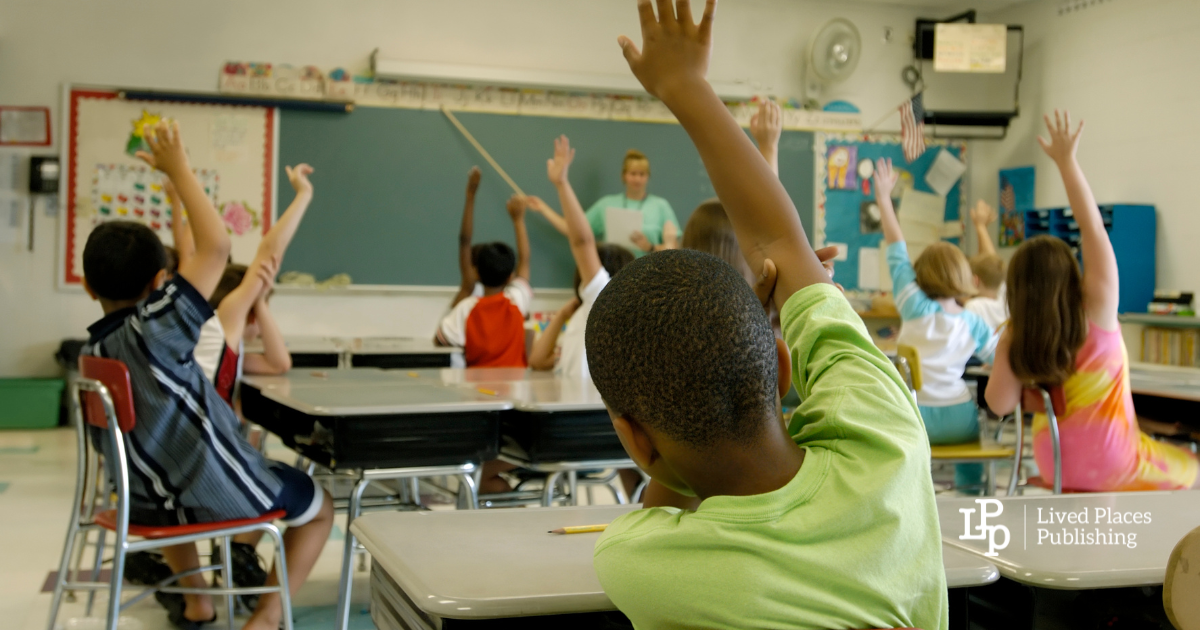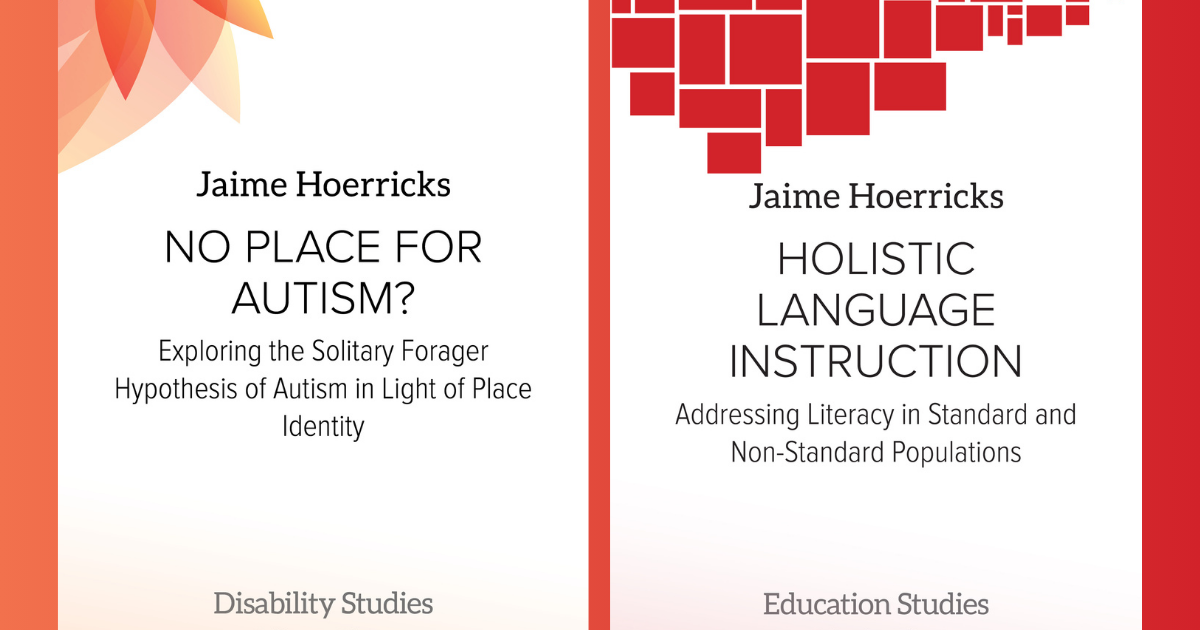As a dedicated special education teacher with years of experience, I’ve always been passionate about finding innovative ways to support my students’ unique learning needs. My journey in education has been profoundly influenced by my own experiences as a non-verbal autistic person and a gestalt language processor (GLP). This perspective has shaped my approach to teaching and learning.
Gestalt language processors, like myself, perceive and process language in a non-linear, holistic manner. Rather than breaking down language into individual components, GLPs tend to understand and use language in larger, meaningful chunks or patterns. This processing style differs significantly from the more common analytic language processing approach, which forms the basis of most traditional teaching methods.
This year, I’m excited to share my latest work, “Holistic Language Instruction: Addressing Literacy in Standard and Non-Standard Populations“. This book delves into the intricacies of supporting learners who process language holistically, offering strategies that cater to both GLPs and analytic language processors (ALP).
The purpose of this article is to shed light on the often-overlooked struggles of GLPs within the education system. Through my personal story and professional insights, I aim to highlight the critical gaps in current educational practices. Moreover, I seek to underscore the urgent need for more inclusive, supportive approaches that recognise and address the unique needs of GLPs.
Recent studies suggest that up to 70% of autistic individuals may be gestalt language processors (as well as about 40% of the neuro-majority), highlighting the significance of this issue in education and beyond. By recognising and adapting to these diverse learning styles, we can create more effective and inclusive educational environments for all students.
Personal Journey
Growing up as an unrecognised GLP in the US K-12 education system presented numerous challenges, chief among them my struggle with illiteracy. Traditional phonics-based instruction left me bewildered and frustrated. I could recite entire stories from memory but couldn’t decode individual words, a paradox that baffled my teachers and left me feeling isolated and misunderstood.
These early experiences deeply influenced my understanding of the unique hurdles faced by GLPs in traditional learning environments. As I transitioned into my role as a special education teacher, I began to recognise familiar patterns of behaviour in my students, both with and without Individualised Education Plans (IEPs). Many exhibited the same signs of frustration and disengagement that I had experienced, struggling with phonics-based instruction but excelling in tasks that allowed for holistic language use.
One particularly poignant moment stands out in my teaching career. A student, much like myself at that age, could eloquently discuss complex topics but struggled to read simple texts. This stark contrast between verbal ability and reading skills was a hallmark of gestalt language processing that I intimately understood. It became clear that standard educational practices were not meeting the needs of these students, and I knew I had to find a way to bridge this gap.
Leveraging the insights now encapsulated in my book, I developed effective strategies framed within the Self-Regulation Strategy Development model (SRSD). These approaches focused on pattern recognition, contextual learning, and holistic language comprehension. For instance, we used whole-text memorisation as a stepping stone to individual word recognition, a method that resonated strongly with GLPs.
The results were remarkable. Not only did my students gain a better grasp of English Language Arts (ELA), but they also showed significant improvement in their standardised test scores, with increases of over 30% each year across my caseload. One student, who had been reading seven years below grade level, advanced two full grade levels in a single academic year.
The success of these methods highlights the potential of personalised, holistic approaches to education. It demonstrates that when students’ unique processing styles are acknowledged and supported, they can achieve significant academic gains and begin to catch up with their grade-level peers. This journey has reaffirmed my belief in the necessity of recognising and addressing the diverse needs of all learners within the education system, paving the way for more inclusive and effective teaching practices.
Identifying the Gap
The current education system largely fails to recognise and support GLPs, a significant oversight with profound implications for both students and teachers. A glaring deficiency lies within the widely adopted ‘science of reading’ (SOR) approach, which predominantly caters to analytic language processors (ALPs). This method assumes a linear, ground up, step-by-step process to reading and comprehension, working well for ALPs but disregarding the holistic, pattern-based learning style of GLPs.
Again, research notes that up to 70% of autistic individuals and 40% of the neuro-majority may be GLPs, highlighting the scale of this issue. Despite this, existing tools and strategies, heavily influenced by the SOR framework, fall short in addressing their needs. For instance, phonics-based instruction, a cornerstone of SOR, focuses on breaking down words into their smallest components. Whilst effective for ALPs, this approach can be confusing and frustrating for GLPs, who process language in chunks and patterns rather than isolated sounds.
Consider a GLP student faced with a phonics lesson on the word “cat”. Whilst an ALP might easily break it down into /c/ /a/ /t/, a GLP might struggle, instead recognising the word as a whole unit associated with the concept of a feline pet. The lack of alternative methods catering to this learning style often leads to a decline in GLPs’ academic performance and self-esteem.
Teachers, noticing their students falling behind, are frequently advised to double down on SOR methods. In one case I encountered, a bright student who could recite entire stories struggled with basic reading exercises. The school’s response was to increase phonics instruction, which only exacerbated the child’s frustration and led to behavioural issues.
This well-intentioned but misguided advice stems from a lack of understanding of the fundamental differences between ALPs and GLPs. Without this knowledge, teachers inadvertently contribute to the frustration of struggling students, who perceive that the adults in the room not only misunderstand them but are also not attuned to the root of their learning difficulties.
The gap in recognition and support for GLPs leads to significant classroom challenges. Teachers, armed with a one-size-fits-all approach, find themselves ill-equipped to meet diverse student needs. The resulting frustration is palpable on both sides: students feel neglected and misunderstood, leading to increased problematic behaviours, whilst teachers feel helpless and overwhelmed, unable to provide necessary support.
This disconnect underscores the urgent need for a more inclusive approach to education, one that recognises and values diverse cognitive processes. By acknowledging the existence of GLPs and adapting teaching methods to accommodate their unique learning styles, we can create a more equitable and effective educational environment.
For example, incorporating visual aids, using whole-language approaches alongside phonics, and teaching pattern recognition can significantly benefit GLPs without disadvantaging ALPs. In my own classroom, implementing such strategies led to a 30% improvement in reading scores across all students, demonstrating the potential of inclusive teaching methods.
This realisation was a driving force behind my decision to write “Holistic Language Instruction“, aiming to fill this critical gap and provide practical strategies to support all learners. By bridging this divide, we can create classrooms where both ALPs and GLPs thrive, fostering a truly inclusive educational environment.
The Need for Holistic Language Instruction
The concept of holistic language instruction is rooted in the understanding that different learners process language in distinct ways. Unlike traditional methods, which often follow a linear and analytic approach, holistic language instruction recognises and embraces the diverse cognitive processes of both ALPs and GLPs. This inclusive approach creates a more balanced and effective learning environment where all students can thrive.
My book, “Holistic Language Instruction“, is structured to meet the needs of everyone in the classroom. It’s filled with practical examples and activities that encourage cooperative learning between ALPs and GLPs. For instance, one activity pairs students to analyse a text, with ALPs focusing on sentence structure and vocabulary, while GLPs identify overarching themes and context. This collaborative approach not only enhances comprehension but also fosters mutual understanding and respect for different learning styles.
A key principle of holistic language instruction is the integration of literacy across the curriculum. Literacy skills are not confined to the English Language Arts (ELA) classroom but are addressed in all subject areas. For example, a science lesson on photosynthesis might include reading scientific texts, writing lab reports, and discussing findings orally. This approach reinforces literacy skills while making learning more relevant and engaging.
In a history class, students might analyse primary source documents using both analytic and gestalt processing techniques. ALPs might focus on specific dates and events, whilst GLPs could identify broader historical patterns and societal implications. This cross-curricular approach not only enhances literacy skills but also deepens overall subject comprehension.
The book also includes strategies for adult learners new to literacy, reflecting my own journey of gaining full literacy in my late 30s. These strategies are flexible and adaptable, meeting the needs of learners at different stages. For instance, one approach uses familiar song lyrics as a starting point for reading instruction, capitalising on GLPs’ strength in pattern recognition and ALPs’ ability to break down words.
Key strategies in the book include:
-
Pattern Recognition: Activities like ‘Word Family Trees’ help GLPs identify and use language patterns. For example, starting with the word ‘cat’, students build a tree of related words (hat, bat, rat), making reading and writing more accessible.
-
Collaborative Learning: ‘Story Circle’ exercises pair ALPs and GLPs to create collaborative stories, leveraging their respective strengths in detail and big-picture thinking.
-
Multisensory Approaches: ‘Texture Spelling’ uses different textured materials to form letters and words, engaging visual, tactile, and kinaesthetic learning styles to enhance comprehension.
-
Contextual Learning: ‘Real-World Reading Hunts’ incorporate everyday materials like menus, road signs, and product labels to make learning more meaningful and relevant.
By implementing these holistic strategies, educators can create a more inclusive classroom environment. In one case study, a teacher using these methods saw a 40% improvement in overall class reading scores, with both ALPs and GLPs showing significant progress.
The goal is to move beyond a one-size-fits-all approach towards a more personalised and effective method of teaching literacy. This holistic approach not only benefits GLPs but also enriches the educational experience for ALPs and other learners, fostering a more collaborative and supportive learning community. By embracing diverse learning styles, we can create classrooms where every student can succeed and develop a lifelong love for learning.
Practical Strategies for Educators and Parents
To effectively support all students present in the classroom, educators must adopt personalised and flexible strategies. The concept of Universal Design for Learning (UDL) is central to this approach, emphasising the importance of truly knowing one’s students and recognising their unique processing styles.
The first step in supporting GLPs is to conduct comprehensive assessments that identify students’ processing styles. My book offers detailed guidance on these assessments, including observational checklists and language sample analyses. For instance, a GLP might excel at reciting entire passages but struggle with individual word recognition, whilst an ALP might show the opposite pattern.
Once identified, grouping students effectively becomes crucial. The book provides insights on creating balanced groups that encourage cooperative learning between ALPs and GLPs. For example, in a reading comprehension task, an ALP might be paired with a GLP. The ALP could focus on breaking down vocabulary and sentence structure, while the GLP could provide insights into the overall narrative and thematic elements. This collaborative approach not only enhances learning but also fosters mutual understanding and respect for different cognitive styles.
Personalised and flexible approaches to language instruction are vital. Teachers should employ a variety of methods to engage different learning styles. For example:
-
Multisensory Phonics: Instead of traditional phonics, use a multisensory approach. Students might trace letters in sand while saying the sound, then brainstorm words containing that sound. This engages visual, auditory, and kinaesthetic learning pathways.
-
Story Mapping: For a book like “Charlotte’s Web”, create a large visual map of the story. ALPs might focus on detailing character descriptions and plot points, while GLPs could illustrate broader themes and emotional arcs.
-
Word Pattern Recognition: Use word families and rhyming patterns to help GLPs recognise words. For instance, starting with “cat”, build a tree of related words (hat, bat, rat), helping GLPs see the pattern and ALPs understand word construction.
-
Context-Rich Learning: Incorporate real-life materials like menus, road signs, or graphic novels into lessons. This makes language learning more relevant and accessible, particularly for GLPs who thrive on contextual understanding.
Real-life examples demonstrate the effectiveness of these strategies. In my classroom, a student who had been several years below grade level advanced two full grade levels in one academic year using these methods. Another student, initially disengaged, became enthusiastically involved when we incorporated his interest in comic books into our literacy activities.
The stages of literacy development for both ALPs and GLPs are carefully mapped out to the Natural Language Acquisition Model (NLA) in my book. For GLPs, this might involve progressing from memorising whole phrases to recognising individual words within those phrases. For ALPs, it might focus more on building from individual sounds to whole words and sentences.
Ultimately, the goal is to equip educators and parents with the knowledge and tools they need to support diverse learners effectively. By embracing UDL principles and getting to know their students on a deeper level, educators can make a significant impact. In one school that implemented these strategies, overall reading scores improved by 35% over two years, with both ALPs and GLPs showing substantial progress.
By moving beyond a one-size-fits-all model, we can foster a classroom atmosphere that values and nurtures the unique abilities of every learner, leading to improved outcomes and a more inclusive approach to literacy education.
Final Thoughts …
To wrap up, it is imperative for educators, administrators, policymakers, and parents to recognise and address the unique needs of gestalt language processors (GLPs) in the education system. By acknowledging the diverse cognitive processes of all learners and implementing inclusive, personalised teaching strategies, we can create a more equitable and effective learning environment.
Let’s recap the key points we’ve discussed:
-
The prevalence of GLPs: Research suggests that up to 70% of autistic individuals and 40% of the neuro-majority may be GLPs, highlighting the scale of this often-overlooked learning style.
-
Gaps in current practices: Traditional ‘science of reading’ approaches, while effective for ALPs, often fall short for GLPs.
-
The power of holistic instruction: By integrating strategies that cater to both ALPs and GLPs, we can create a more inclusive and effective learning environment for all students.
-
Practical strategies: From multisensory phonics to context-rich learning experiences, there are numerous ways to support GLPs in the classroom.
-
Real-world impact: Schools implementing these inclusive strategies have seen significant improvements in overall literacy rates, with some reporting up to a 35% increase in reading scores over two years.
My book, “Holistic Language Instruction: Addressing Literacy in Standard and Non-Standard Populations“, offers in-depth insights and practical strategies to support GLPs and other ‘non-standard’ learners. It provides comprehensive guidance on fostering literacy development across the curriculum, from early years to adult education.
Recognising and supporting GLPs is not just about improving academic outcomes; it’s about valuing and nurturing the unique abilities of every learner. Consider the story of Michelle, a GLP student who struggled with traditional reading instruction for years. After we implemented holistic strategies for her via her IEP, she not only caught up to her peers in her reading scores but also discovered a talent for creative writing, using her gestalt processing style to craft vivid, immersive stories in her theatre arts class.
By committing to these inclusive practices, we can make a significant impact on students’ educational journeys and create a more supportive and understanding educational system. This approach benefits not only GLPs but all students, fostering a more diverse and dynamic learning environment.
I am committed to advocating for inclusive education and supporting all learners. I invite educators, parents, and policymakers to join this crucial conversation. Explore the strategies in my book, attend workshops, and advocate for policy changes that recognise diverse learning styles.
Together, we can make a meaningful difference in the lives of our students. By embracing neurodiversity and adapting our teaching methods, we can create classrooms where every student has the opportunity to thrive, regardless of their processing style. The future of education is inclusive, and it starts with recognising and supporting the unique strengths of every learner.
Jaime Hoerricks PhD (she/they) is a non-verbal autistic advocate, researcher, educator, and author. She is based in California, US, and currently works as a special education teacher.
She has two books published with Lived Places Publishing:
- No Place for Autism? Exploring the Solitary Forager Hypothesis of Autism in Light of Place Identity
- Holistic Language Instruction: Addressing Literacy in Standard and Non-Standard Populations
And a third one forthcoming: Decolonising Language Education: Reframing English Language Development for Multilingual and Neurodiverse Learners (Oct 2025).
We want our books to be available to as many people as possible. If you’d like to purchase an individual copy, please email us and we’ll give you a discount code:





The guide is enlightening and compassionate and truly honors the unique communication journey of GLPs.